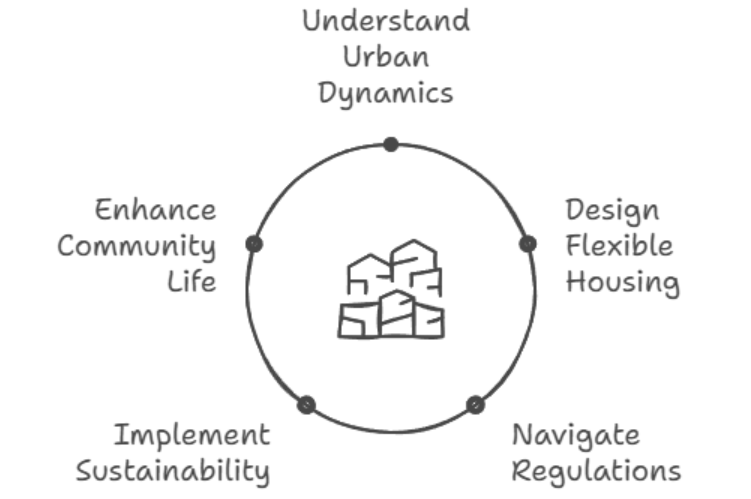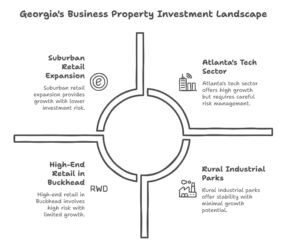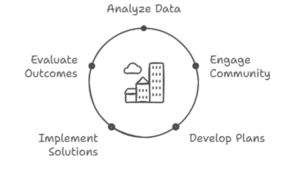
Urban housing… It’s the very lifeblood that courses through the veins of any thriving city. Far more than just arrangements of brick and mortar, these spaces shape communities, dictate our daily rhythms, and ultimately, collectively define the character of our urban landscapes. With urbanization continuing its relentless march across the globe, the importance of thoughtful housing design cannot be overstated.
Over my years working in this field, I’ve had the chance to see, firsthand, how truly innovative design can transform not only individual buildings, but entire neighborhoods. From sparking neighborly interactions to driving broader revitalization, the ripple effects are undeniable. Throughout this article, I’m going to share some insights – hard-earned, I assure you – that can help you create urban housing that doesn’t just meet the immediate needs of its residents, but actively enhances the vibrancy, sustainability, and overall quality of life within our cities. Perhaps we can even challenge some existing norms along the way.
Understanding the Context
Designing truly effective urban housing isn’t just about sketching floor plans and choosing materials. It requires something of a deep dive into a rather complex web of interconnected factors. You need to understand everything from the broad brushstrokes of urban planning policies right down to granular details like the evolving needs of individual residents. You have to consider demographics, navigate the often labyrinthine world of housing regulations, and proactively account for, you guessed it: the ever-present influences of external environmental factors. It’s a lot, I know – but let’s break it down.
Demographic Shifts and Needs
Our cities are in constant flux; they’re evolving organisms, really. And, naturally, so too are the populations that inhabit them. We’re currently seeing significant growth in single-person households. There is also an increasing aging urban population, and a greater diversity of family structures compared to previous generations. Recent data paints a clear picture: almost all major cities are experiencing significant increases in their senior populations.
Thinking about these demographic trends, it becomes clear, almost immediately, that we need more flexible housing options. Universal design principles are essential, as are readily accessible community resources. We need to create spaces that adapt seamlessly to the changing realities of urban life.
Regulatory Landscape
Zoning Laws and Building Codes: consider them the rulebook, written at a macro level, that shapes the game of housing development. These regulations wield enormous influence over design possibilities. For instance, an area rigidly zoned only for single-family dwellings can effectively stifle the kinds of diverse, innovative housing solutions that could dramatically increase density and, crucially, improve affordability.
The truth? Some regulations, sadly, are rather antiquated. They haven’t quite caught up with the realities of modern urban living. That’s not to say regulations are bad – far from it – but it does mean we need to constantly review, question, and advocate for sensible updates. Keywords: building codes, zoning laws, housing regulations, affordable solutions.
Sustainability Imperatives
For me, sustainability isn’t just another fleeting trend to capitalize on; it’s a fundamental, non-negotiable responsibility. When we’re designing homes, we’re also making decisions that will directly impact the lives of future generations.
From prioritizing the use of green building materials to implementing advanced energy efficiency strategies and minimizing water usage across the board, every single design decision should actively minimize its overall environmental footprint while simultaneously maximizing the long-term well-being, both physical and mental, of the residents who will occupy those spaces.
Design Principles for Urban Housing
Effective urban housing doesn’t simply materialize out of thin air; it’s the tangible result of a set of carefully considered and consistently applied design principles. These principles act as essential guiding stars, steering us toward the creation of spaces that truly foster livability, sustainability, and a genuine sense of community. Density done right, privacy (of course), fostering a sense of community, ensuring accessibility, and designing for long-term adaptability… These are all vital components in creating a thriving urban environment. Finding the right balance, that’s the challenge.
Maximizing Density Responsibly
Density often gets a bad reputation, conjuring images of cramped living and overwhelming concrete jungles. But let’s be upfront: smart, compact design empowers responsible density. Think about the “missing middle” housing concept: this includes duplexes, townhouses, and thoughtfully designed courtyard apartments. It represents a sweet spot, allowing us to increase urban density without sacrificing the unique character of a neighborhood or, perhaps even more important, compromising the overall quality of life for its residents.
Balancing Privacy and Community
Designing urban spaces that successfully balance the needs for both individual privacy and a thriving sense of community can often feel like walking a tightrope across the Grand Canyon. Really! The key lies in creating clear, well-defined boundaries, both physical and psychological, between private living areas and shared public spaces.
Consider co-housing communities: These actually offer a valuable model. They typically incorporate private, self-contained residences alongside a diverse array of shared amenities such as communal gardens, dining halls (imagine the potlucks!), and perhaps even shared workshop spaces, organically fostering a deep sense of community among residents. LSI Keywords: co-housing, shared spaces, communal living.
Prioritizing Accessibility and Inclusivity
Accessibility shouldn’t be some kind of post-construction afterthought; it should instead be seamlessly woven into the very fabric of the design from the initial stages. Universal design principles – wider doorways, strategically placed ramps, kitchens and bathrooms designed for adaptability – ensure homes are usable and enjoyable, period, for people of all ages and a wide spectrum of abilities.
Moving beyond just physical accessibility towards true inclusivity means intentionally considering a wide array of diverse backgrounds, unique needs, and varied cultural perspectives, crafting spaces where every single person feels genuinely welcome, comfortable, and safe..
Designing for Adaptability and Change
Life, as the old saying goes, is often unpredictable. Our homes, our living spaces, should therefore be capable of adapting and evolving right along with us. Flexible design features are essential here: think movable walls that allow you to reconfigure a space, rooms designed for multiple purposes that transform as needed, and modular design concepts that allow the entire structure to grow or shrink over time. Modular housing, in particular, offers great potential for creating affordable, highly adaptable, and truly sustainable urban residences.
Integrating Green Spaces
Bringing nature into the city is absolutely vital for fostering overall well-being for residents, both physically and mentally. Green roofs transform otherwise unused spaces into thriving ecosystems, vertical gardens add splashes of vibrant life to otherwise drab facades, and community gardens provide opportunities for residents to connect with nature, grow their own food, and build relationships around a shared purpose. Furthermore, biophilic design principles, which directly connect people with nature through the use of natural materials, exposure to ample natural light, and strategically framing views of lush greenery, can work wonders in this area.
Enhancing Natural Light and Ventilation
Natural light and ample ventilation are far more than just desirable amenities; they are, in a real and very tangible sense, fundamentally essential for creating healthy, comfortable, and truly uplifting living environments. Optimizing window placement to maximize the amount of natural light that floods each room, designing for effective cross-ventilation to promote fresh airflow, and incorporating light wells in strategic locations. These are all considered passive design strategies; that’s where you use the environment to your benefit instead of using machines. These strategies not only reduce overall energy consumption, but also dramatically improve indoor air quality and create a more positive atmosphere. LSI Keywords: passive design, natural lighting, indoor air quality.
Innovative Design Solutions
The most effective way to truly understand the transformative power of good design is to examine it in action. Across the globe, architects and urban planners are pushing the boundaries and crafting genuinely innovative urban housing solutions that directly address specific challenges and measurably improve the quality of life for the people who inhabit those spaces. It is important to remember that the following represent only a handful of the many exciting approaches being used worldwide. Now, let’s dive into the case studies.
Case Study 1: The Interlace, Singapore
The Interlace represents nothing short of a radical rethinking of traditional apartment living. Instead of constructing a series of isolated, monolithic towers, this mixed-use development ingeniously stacks apartment blocks horizontally, creating a sprawling network of interconnected courtyards and vibrant green spaces. It encourages both seamless community interaction and provides ample natural light and effective ventilation to each individual unit.
Case Study 2: Nakagin Capsule Tower, Tokyo
Currently facing demolition, Kisho Kurokawa’s Nakagin Capsule Tower, whether ultimately preserved or not, stands as a truly landmark example of innovative micro-housing design and a forward-thinking approach to adaptable space utilization. Each self-contained capsule was designed to be individually replaced or reconfigured, should the need arise, showcasing a genuinely forward-thinking approach to the ever-evolving realities of urban living.
Case Study 3: Kampung Admiralty, Singapore
Kampung Admiralty is widely recognized as a pioneering example of successfully integrating housing with dedicated elderly care facilities alongside a wide array of essential community amenities. This truly forward-thinking mixed-use development features everything from a bustling hawker center to a childcare center, a state-of-the-art medical center, and even a thriving community garden – all carefully integrated within the same building structure. Ultimately, this fosters enriching intergenerational interaction and creates a vibrant, genuinely age-friendly community. LSI Keywords: age-friendly housing, mixed-use development, intergenerational community.
I distinctly recall visiting Kampung Admiralty and being struck by how seamlessly different uses and age groups were integrated into the overall structure. Simply observing seniors happily tending to the community garden alongside young families brought it home for me: urban housing can be leveraged as a powerful tool for fostering social connection, promoting individual well-being, and building the bedrock of a thriving community. In fact, I took a bunch of pictures, and I’ve incorporated some of the underlying concepts into my own build designs.
The Role of Technology in Urban Housing
Technology is no longer just a futuristic concept that we theorize about; it’s an increasingly integral part of how we design, build, and ultimately, manage urban housing developments. From streamlining the construction process itself to fundamentally enhancing the living experience for all residents, technology in housing offers truly endless opportunities to create more efficient, more sustainable, and far more livable communities compared to anything conceived in the past. Think: cutting-edge smart home systems, the advanced precision of Building Information Modeling (BIM), and the efficiency gains offered by modular construction techniques.
Building Information Modeling (BIM)
BIM has effectively revolutionized how we approach building design and construction from the most fundamental levels. It creates a highly detailed digital representation of a building, enabling architects, engineers, and contractors to visualize the entire project from start to finish, proactively identify potential problems before they become costly and time-consuming headaches, and, crucially, collaborate far more effectively throughout the entire development lifecycle. I’ve seen BIM reduce construction costs by upwards of 15% and significantly shorten project timelines, especially when it comes to properly utilizing space.
Smart Home Technologies
Smart home technologies are rapidly transforming how we interact with our environments and living spaces daily. From smart thermostats that automatically optimize energy efficiency based on occupancy patterns to advanced security systems that provide enhanced peace of mind, these sophisticated systems automate tedious tasks and enhance overall convenience. We must begin to fully embrace the multitude of benefits that smart homes offer.
Modular Construction and 3D Printing
Modular construction and 3D printing are not just futuristic buzzwords; they represent very tangible solutions with enormous potential for efficiently creating affordable and incredibly sustainable housing. These innovative methods can significantly reduce overall construction time and associated costs while minimizing material waste and, simultaneously, improving overall quality control through standardized processes. What’s more, the overall cost savings associated with these techniques can be nothing short of substantial. LSI Keywords: 3D printed homes, prefabrication, cost effective housing.
Community Engagement and Participation
Meaningful community engagement forms the unquestionable cornerstone of any truly successful urban housing project. It’s fundamentally about ensuring that the diverse voices, unique needs, and collective aspirations of the communities you intend to serve are actively heard and thoroughly integrated into the entire design process from beginning to end. Think of it as participatory design that’s supported by ongoing public consultation.
Why Community Engagement Matters
Actively involving valued neighborhood members in the overall design process inevitably fosters a deep sense of trust by making them valuable collaborators and active stakeholders from the earliest stages of building both their own homes and their surrounding neighborhoods.
Effective Engagement Strategies
I’ve always believed that the most effective way to ensure genuine community engagement is by fostering open and transparent dialogue right from the very beginning. This means proactive outreach, regular community workshops, conducting surveys, establishing stakeholder advisory groups, and providing ongoing opportunities for feedback. This encourages active participation and builds a genuine sense of shared ownership among all stakeholders.
Addressing Community Concerns
In the end, a crucial part of community engagement is to carefully consider concerns and then actively work towards incorporating them, where possible, into the final design, which is much easier said than done. Ultimately, it’s a delicate balancing act: trying to serve the varied needs of a broad community while acknowledging and addressing very specific requests. Good communication is invaluable here. In the end, it boils down to approaching everything with flexibility, a commitment to collaboration,
Addressing Challenges and Future Trends
The entire world of urban housing is in a state of constant evolution and flux, so we, as architects and urban planners, simply must be prepared to both address emerging challenges as they arise, and enthusiastically embrace promising future trends as they come to the forefront. This means proactively addressing issues such as escalating housing affordability, actively planning for climate change adaptation, and continually adapting and innovating to cater to an increasingly diverse population.
Affordability Crisis
The rapidly escalating cost of housing, a global phenomenon. Innovative financial models, forward-thinking zoning reforms that incentivize responsible density, and the wider adoption of economically sound construction techniques, such as modular construction, can all play a crucial role in tackling this growing crisis.
Climate Change Adaptation
Designing for climate change adaptation is fast becoming not just a best practice, but an absolute imperative. This means integrating resilient building materials that can withstand extreme weather events, elevating buildings above projected flood levels, constructing green infrastructure to effectively manage stormwater runoff, and thoughtfully designing for passive cooling and natural ventilation to minimize reliance on energy-intensive systems.
Aging Population and Healthcare
With the global population aging at an unprecedented rate, creating housing solutions that thoughtfully cater to the specific needs and unique challenges faced by seniors has become paramount. Incorporating integrated healthcare facilities, designing accessible spaces that promote independent living, and proactively fostering intergenerational communities are critical considerations here. I distinctly recall when I helped design an accessible home for my aging grandmother. The experience really highlighted the importance of thoughtful, human-centered design for enabling independent living and ensuring a high quality of life, in her case, for years to come.
Balancing density with green space
As cities grow increasingly dense, finding innovative ways to balance that density with easy access to diverse green space and natural environments becomes more critical than ever. The creative integration of sky parks atop existing structures, the construction of green roofs that transform otherwise unused spaces into thriving gardens, and the strategic placement of vertical gardens help to create healthier, more balanced urban environments for everyone.
Urban design is, at its core, a powerful tool that we can, and should, leverage to more effectively shape our cities and measurably improve the lives of their residents. Looking ahead, it is essential that all members of our community prioritize community engagement, leverage cutting-edge technologies, and embrace innovative design principles. Only then can we create urban housing that is not only highly functional and truly sustainable, but also, vibrantly inclusive and deeply enriching for all.
My hope is that, through this read, I inspired at least most readers to join in the creation process. I firmly believe that whether you’re a student exploring potential career paths in architecture or a committed community member advocating for better housing solutions in your neighborhood, your voice matters. Together, we must keep building cities that are not simply collections of buildings made of stone and steel, but thriving, resilient, and thoughtfully designed communities that all of their residents can not just call home, but be truly proud to call home.


